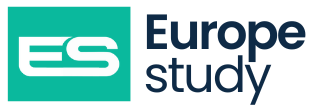
Intakes in Public Universities of Denmark
Denmark is home to some of the most innovative and student-friendly universities in Europe, attracting thousands of international students each year. Public universities in Denmark generally offer two main intakes — September (Fall)and February (Spring) — though the September intake is the primary one for most programs. Application deadlines vary slightly by university and program, making it crucial to plan and apply early.
? Main Intakes and Application Timeline
✅ September Intake (Fall Semester)
The September intake is the most common and widely available across all Danish universities. It is especially popular among international students due to the broad range of programs available.
-
February: Application portal opens for international applicants.
-
Mid-March: Deadline for non-EU/EEA applicants with non-Danish qualifications.
-
Early July: Deadline for applicants with a Danish Upper Secondary Education.
-
Late July: Admission results are typically announced.
✅ February Intake (Spring Semester)
The Spring intake is less common and usually limited to specific programs. However, it still offers a good opportunity for students who missed the Fall deadlines.
-
October: Deadline for EU/EEA applicants applying for Spring semester programs (varies by university).
-
February or March: Semester starts.
? Examples of University Deadlines
-
University of Southern Denmark (SDU):
-
Offers September intake at Odense and Sønderborg campuses.
-
Deadline: February 1 for non-EU/EEA applicants without a Danish residence permit.
-
-
Technical University of Denmark (DTU):
-
Offers both Spring and Fall intakes for specific programs.
-
Spring intake usually begins in February or March, with deadlines in October (for EU/EEA) and earlier for non-EU/EEA applicants.
-
? Note: Each university may have its own internal deadlines and program-specific requirements, so checking the official university website is essential.
? Key Application Requirements
? Language Proficiency
If you're from a non-English speaking country, you’ll likely need to submit proof of English proficiency — commonly accepted tests include IELTS, TOEFL, or Cambridge English qualifications.
? Academic Requirements
Each program has its own academic entry criteria, including:
-
Relevant subject knowledge
-
Minimum grade point average (GPA)
-
Prior coursework in required subjects
? Supplementary Courses
If your current qualifications don't fully meet the entry requirements, some universities offer supplementary courses to help bridge the gap and qualify for admission.
? Tips for Applicants
-
Apply Early: Especially important for non-EU students who require a visa and housing.
-
Prepare Documents in Advance: Including certified transcripts, language test results, a motivational letter, and recommendation letters.
-
Check University-Specific Requirements: Deadlines and required documents can vary significantly.
Denmark’s universities offer flexible and well-structured admission processes, but early preparation is essential. With two intakes per year and a variety of programs in English, Denmark remains a top choice for international students seeking high-quality education in a progressive European country.





